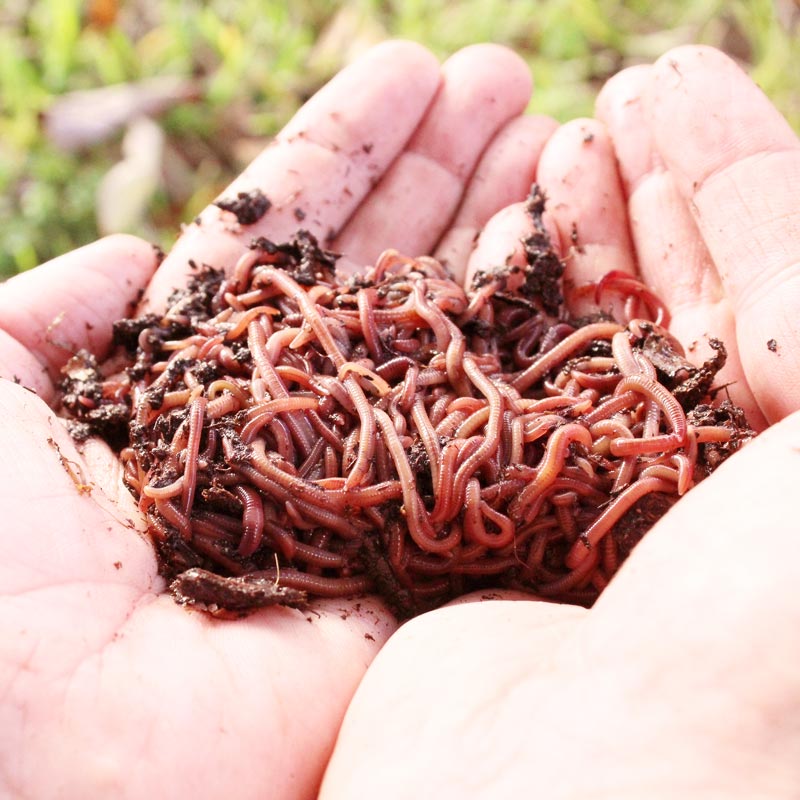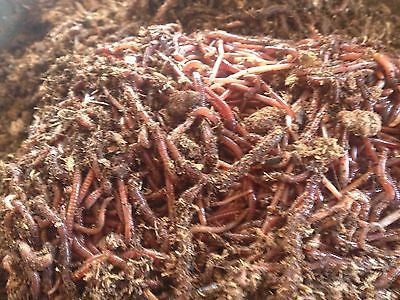Purchase Red Wiggler Worms - Perfect for Composting and Gardening
Purchase Red Wiggler Worms - Perfect for Composting and Gardening
Blog Article
Optimizing the Perks of Red Wiggler Worms: A Comprehensive Manual for Home Gardeners and Urban Farmers
In the realm of lasting horticulture techniques, red wiggler worms stand as unhonored heroes, quietly transforming organic waste into nutrient-rich castings that can work wonders for dirt health. By exploring the complexities of exactly how to successfully care for and optimize the advantages of red wiggler worms, people can open a wealth of opportunities for enhancing the sustainability and performance of their gardening endeavors.
Comprehending Red Wiggler Worms
Red Wiggler worms, renowned for their effective composting abilities, are a species of earthworms extensively utilized in vermiculture techniques. These worms, medically called Eisenia fetida, flourish in decaying natural material, making them perfect prospects for composting (Red Wiggler Worms). Red Wigglers are starved eaters, capable of eating their own weight in organic waste daily. Their digestive process breaks down natural issue right into nutrient-rich spreadings, which are an important source for improving dirt and promoting plant growth.
One key quality of Red Wiggler worms is their reproductive price. These hermaphroditic creatures possess both male and female reproductive organs, enabling them to recreate quickly under favorable conditions. A mature Red Wiggler can create several children in a brief duration, ensuring a consistent populace within a composting system.

Establishing a Worm Bin
When developing a worm container for vermiculture objectives, appropriate prep work and focus to detail are necessary for developing a conducive atmosphere for Red Wiggler worms. Begin by picking a suitable container for your worm bin.

Place the worm bin in an amazing, dark location away from straight sunshine and extreme temperatures. By following these steps, you can establish up a thriving worm container that will successfully process organic waste right into nutrient-rich vermicompost for your garden.
Feeding and Preserving Worms
Making sure a well balanced and nutritious diet plan is essential for the health and wellness and efficiency of Red Wiggler worms in a vermiculture system. It is essential to prevent feeding them citrus fruits, onions, garlic, dairy products, meat, and oily foods as these can be damaging to the worms or trigger unpleasant odors in the bin.
Proper moisture levels are also critical for the well-being of Red Wiggler worms. The bedding should seem like a damp sponge, providing enough moisture for the worms to breathe with their skin. Routinely inspect the wetness degrees and adjust by adding water or dry bed linen product as needed. Furthermore, keeping appropriate temperature problems between 55-77 ° F(13-25 ° C )will make certain optimal worm task and recreation. By diligently monitoring their diet plan, dampness, and ecological problems, home garden enthusiasts and city farmers can sustain a effective and healthy Red Wiggler worm population for composting functions.
Harvesting Worm Spreadings
To successfully draw out nutrient-rich worm why not look here spreadings from the vermicompost, a methodical harvesting process is necessary for maximizing the composting advantages. Red Wiggler Worms. The very first step in gathering worm castings is to motivate the worms to migrate to one side of the bin. This can be attained by positioning fresh food scraps on one side and leaving the opposite side uninterrupted for a couple of days. Once the bulk of worms have actually dodged with fresh food, the castings can be accumulated from the opposite side.
After the castings have actually been collected, it is very important to separate any remaining worms from the spreadings to stay clear of harming them during storage or application. One efficient approach is to develop cone-shaped piles of castings under brilliant light. Worms will intuitively relocate far from the light, enabling easy separation and removal.
Last but not least, the collected worm spreadings ought to be kept in a cool, dark, and dry location to preserve their high quality and performance as a nutrient-rich dirt amendment. By complying with these actions, home gardeners and city farmers can maximize the benefits of red wiggler worms in their vermicomposting systems.
Utilizing Worm Castings in Gardening
The consolidation of nutrient-rich worm castings into garden dirt can substantially boost plant development and total dirt wellness. Worm spreadings, additionally known as vermicast, are a natural plant food generated by red wiggler worms as they damage down raw material. These spreadings are rich in necessary nutrients like nitrogen, phosphorus, potassium, and valuable germs that advertise plant development and boost dirt framework.
When using worm castings in gardening, it is necessary to blend them extensively right into the dirt or utilize them as a leading clothing around plants. The this content slow-release nature of worm spreadings makes certain a constant supply of nutrients to plants gradually, minimizing the danger of nutrient leaching and promoting long-term soil fertility. Additionally, worm castings assist boost dirt aeration, water retention, and microbial task, developing a healthy environment for plant roots to thrive.

Final Thought
In conclusion, the application of red wiggler worms in home horticulture and metropolitan farming can dramatically profit dirt wellness and plant development. By understanding exactly how to establish up and preserve a worm container, feed the worms correctly, and gather their nutrient-rich spreadings, gardeners can make best use of the benefits of these earthworms.
In the realm of lasting horticulture techniques, red wiggler worms stand as unsung heroes, quietly transforming organic waste right into nutrient-rich spreadings that can work wonders for soil wellness.When developing a worm bin for vermiculture purposes, proper prep work and focus to information are necessary for producing a favorable environment for Red Wiggler worms. The first step in collecting worm spreadings is to motivate the worms to migrate to one side of the bin. Worm castings, also recognized as vermicast, are an all-natural plant food created by red wiggler worms as they break down organic issue. By recognizing exactly how to set up and keep a worm bin, feed the worms properly, and collect their nutrient-rich castings, gardeners can take full internet advantage of the benefits of these earthworms.
Report this page